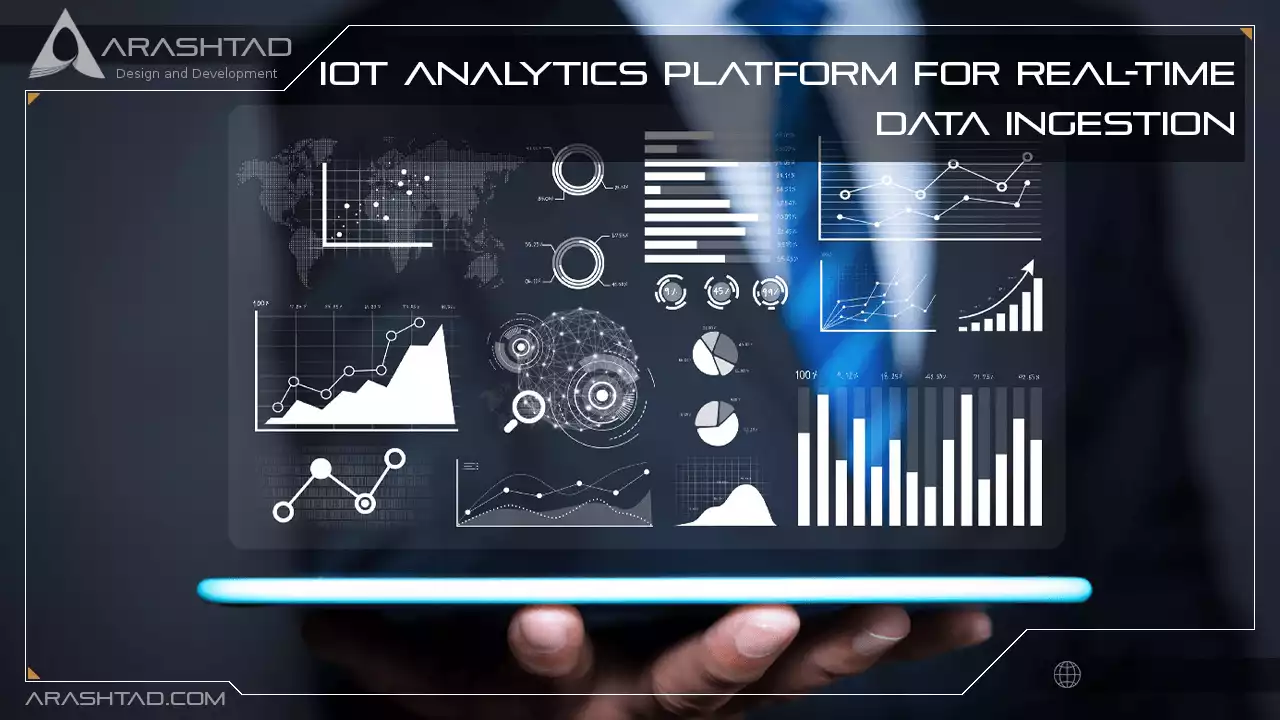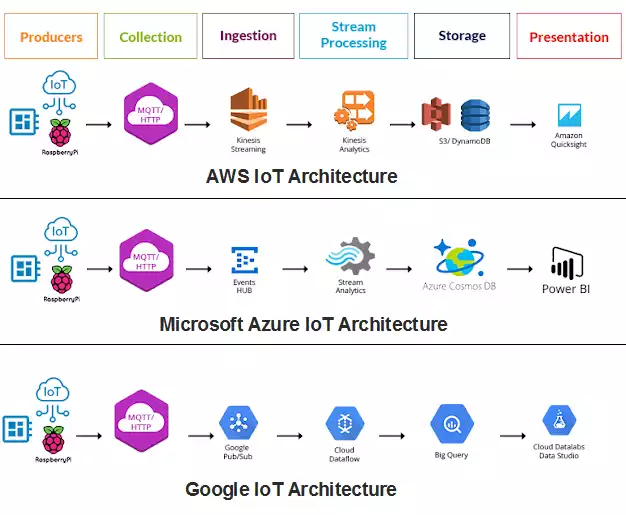IoT Analytics Platform for Real-Time Data Ingestion
IoT analytics can analyze the data generated by connected IoT devices. Kevin Ashton coined the term “Internet of Things” as a co-founder of the Massachusetts Institute of Technology (MIT’s Auto-ID Center). As a result, the IoT is just an ecosystem of physical devices that connect to the internet. You can see the results of those connections using the IoT analytics platform.
IoT Analytics Platform Overview
As a result of the massive amount of data generated by connected IoT devices, IoT analytics helps to understand them. Kevin Ashton, the co-founder of the Auto-ID Center at MIT, coined the term Internet of Things. Therefore, the Internet of Things is only an ecosystem of physical objects connected to the internet, and we see results through the IoT analytics platform. In this blog, you can also learn more about Real-Time Anomaly Detection for Cognitive Intelligence. For example, these physical things include Smartphones, Tablets, Wearable devices, etc.The architecture of IoT
Hardware/Sensing Layer
It consists of hardware devices connected to the network layer as the first layer of the IoT architecture. There are two main building blocks of the IoT: Wireless Sensor Networks (WSN) and radio-frequency identification (RFID). Arduino Microcontrollers are directly connected to the sensors. In addition to being connected to the Raspberry Pi, the Arduino microcontrollers are also connected to the internet with Ethernet or WiFi. The data collected from the sensor is transmitted to the server in real-time.Network/Gateway Layer
As a bridge between the Hardware / Sensing Layer and the Management Layer, this layer receives digitized data and routes it to the next layer via wired LAN, WiFi, or the Internet. IoT gateways and servers can communicate using several protocols, including MQTT, AMQP, COAP, and HTTP. The different protocols used will be discussed in the following sections.Management Layer
Sensor data is analyzed during this layer to extract the necessary information. It is the layer that is responsible for data modeling and security control.Application Layer
As the last layer of the IoT analytics architecture, this layer uses the data processed by the management layer.Real-Time Stream Processing for IoT
A real-time stream processor refers to processing data collected in real-time from IoT devices. Learn more about Open Source tools for real-time analytics platforms. Here are some tasks that can be included in this processing:1- Transformation: This involves converting the data collected from the IoT device and then transferring the resulting data for analysis.
2- Data Enrichment: The data enrichment process combines raw sensor data with another dataset to obtain results.
3- Storing Data: The task involves storing the data at the required location.
Most Widely Used Protocols In IoT
Below are the most widely used protocols:MQTT
This protocol uses a publish-subscribe architecture. The central communication point is the MQTT broker. Each client publishes data to the broker with the topic name. Topics are responsible for routing information for the broker. Clients subscribe to specific topics, and the broker delivers messages containing that topic to those clients.COAP
A web-based protocol designed for connecting lightweight devices to the Internet of Things is the COAP Protocol (Constrained Application Protocol). A Request-Response model is also used in COAP, and API calls can also be made via URL via GET, PUT, POST, and DELETE data.AMQP
It connects systems, provides information to business processes, and is an open standard for passing messages between applications and organizations. AMQP (Advanced Messaging Queuing Protocol) is an open standard for passing messages between applications and organizations.HTTP
It is a standard protocol for web services, and IoT analytics solutions use this standard protocol for web services. RESTFul architectures are widely used in mobile and web applications, and IoT solutions must take them into account.DDS
Data Distribution Service, or DDS, is a standard for machine-to-machine communication, including real-time analytics and scalable applications. DDS is available both in low-footprint devices and in the cloud.Introduction to Top Three IoT Architecture
AWS IoT Architecture
AWS IoT architecture uses Kinesis Stream for data ingestion. We need to define a Kinesis action that collects MQTT data and sends it to Kinesis Analytics for further processing. After the stream processing is complete, the processed data is sent to Amazon Redshift and Amazon S3. This can be achieved using Amazon QuickSight to represent the data. With Amazon QuickSight, we can create visualization dashboards, perform ad hoc analysis, and quickly obtain business insights.Microsoft Azure IoT Architecture
Microsoft Azure Events Hub connects to MQTT through Cloud Gateway and consumes data from Raspberry Pi via the MQTT broker. Azure offers Stream Analytics for data processing. Above all, Event Hub data streams can be used to process real-time data streams. After processing, the data is sent to Azure CosmoDB and visualized on Power BI by connecting to CosmoDB.Google IoT Architecture
The IoT analytics architecture in Google uses Cloud Pub/Sub to listen to data from MQTT brokers. Cloud Pub/Sub can also handle a real-time data stream. Cloud Pub/Sub also integrates with other Cloud Platform services, connecting data import, pipelines, and storage systems. To process the data from the IoT device, Cloud Pub/Sub sends it to Cloud Dataflow. Cloud Dataflow creates a data pipeline for performing data transformations.Top Industrial IoT Applications
1-Healthcare
Healthcare is one of the fastest industries adopting the Internet of Things. Many sensors are coming into the scenario, and the healthcare sector is adopting them very quickly. Doctors use these devices to monitor whether their patients adhere to their treatment regimens.2-Smart Retail
It is used for energy management, predicting equipment failure, and detecting other issues in retail stores. Therefore, IoT analytics in Retail helps to enable precise inventory management and, most importantly, enhance the shopping experience for consumers.3- Smart Transportations
With smart transportation, vehicles can be kept on the road by predicting maintenance needs and streamlining logistics by analyzing real-time data and alerting, optimizing delivery routes, monitoring performance, and quickly responding to delays or problems. With real-time analytics, we can reduce traffic congestion.4- Industries
IoT sensors in manufacturing equipment can send condition-based alerts when temperatures and vibrations reach a certain range. This will allow operation managers to manage the machines remotely.5- Smart Agriculture
The field of smart agriculture is growing rapidly. as a result, farmers can gain meaningful insights from IoT-driven data for detecting soil moisture and nutrients and controlling water usage to optimize plant growth.6- Smart Buildings
IoT allows smart buildings to connect, reduce management and utility costs, and learn from the data they collect. IoT analytics, for example, can help you customize and automate your building’s heating, cooling, and room utilization, which further contributes to creating a more comfortable and productive work environment.Conclusion
The Internet of Things (IoT) analytics is a data analysis tool that analyzes the data collected from IoT devices. In this article, you will learn about the architecture of IoT, the most widely used protocols in IoT, the critical use cases of IoT Analytics, and more.Download this Article in PDF format

Arashtad Custom Services
In Arashtad, we have gathered a professional team of developers who are working in fields such as 3D websites, 3D games, metaverses, and other types of WebGL and 3D applications as well as blockchain development.
Arashtad Services
Drop us a message and tell us about your ideas.
Fill in the Form
Blockchain Development


